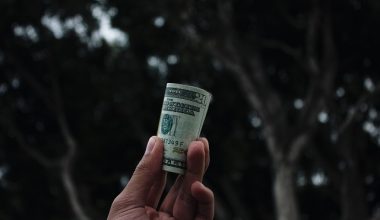Options contracts give their owners the right (but not the responsibility) to buy or sell a specific asset (often 100 shares of a company) at a specific price (the strike price) until the contract expires. The right to buy an asset is granted to call option holders, whereas the right to sell an asset is granted to put option holders. Out of money is a major part of options, hence we shall dedicate this post to discussing this deeply.
What Is Out of Money
One of three words used in options trading, out of money refers to the price of an underlying asset in relation to the price at which it can be bought or sold (its strike price).
An option can be in the money or at the money, in addition to being out of the money. These terms are referred to be an option’s’moneyness.’
When an option has not yet hit its strike price, it is said to be out of the money. Being out of the money indicates the asset price is still below the strike price if the option is a call – a bet that the asset will increase in price, similar to buying or going long. When the asset’s price is above the strike price, a put a wager that an asset will decline in price, similar to selling or shorting – will be out of the money.
The term “out of the money” (OTM) is to indicate an option contract with purely extrinsic value. The delta of these options will be less than 50.0.
The strike price of an OTM call option will be greater than the market price of the underlying asset. An OTM put option, on the other hand, has a strike price that is lower than the underlying asset’s market price.
In-the-money (ITM) options are in contrast to out-of-the-money (OTM) options.
Overview
You can identify if an option is out-of-the-money by looking at the current underlying price with respect to the strike price. If the underlying price of a call option is less than the strike price. The option is out of the money. If the underlying price of a put option is higher than the strike price. The option is out of the money. An option that is out of the money has no intrinsic value and only extrinsic or temporal value.
Even though an option is out of money, a trader can still benefit from it. Each option has a premium attached to it. A trader could have purchased an option that was far out of the money. But that option is now getting closer to being in the money (ITM). Even though the option is currently out of the money. It may wind up being worth more than the trader paid for it. However, if an option is out of the money when it expires, it is useless. As a result, if an option is out-of-the-money. The trader must sell it before it expires in order to recuperate any residual extrinsic value.
Consider a stock with a market capitalization of $10. Call options with strike prices over $10 are OTM calls. While put options with strike prices below $10 are OTM puts for this stock.
Out of the Money Options Example
A trader is interested in purchasing a call option on Vodafone stock. They select a call option with a strike price of $20. The option has a five-month expiration date and costs $0.50. Before the option expires, they will have the option to purchase 100 shares of the stock. The option’s total cost is $50 (100 shares by $0.50), plus a transaction commission. At the time of writing, the stock is trading at $18.50.
There is no need to exercise the option after purchasing it because doing so requires the trader to pay $20 for the shares when the market price is already $18.50. While this option is out of the money. It isn’t completely useless because there is still a chance to profit by selling it rather than exercising it.
The trader, for example, just paid $0.50 for the chance that the stock will rise above $20 in the following five months. That option will still have some intrinsic value prior to expiration. Which is in the premium or cost of the option. Although the underlying may never reach $20, the option’s premium may rise to $0.75 or $1 if it gets close. As a result, the trader might still benefit from the OTM option by selling it at a higher premium than they purchased.
It’s worth executing the option if the stock price rises to $22 the option is now ITM. They have the option to buy for $20, but the current market price is $22. The intrinsic value, which is $2, is the difference between the strike price and the current market price.
In the Money vs. Out of the Money
The difference between “in the money” (ITM) and “out of the money” (OTM) in options trading is by the strike price’s position relative to the underlying stock’s market value. Which is referred to as moneyness.
The strike price of an ITM option has already been by the current stock price. An out-of-the-money option is one with a strike price that is higher than the underlying security’s current price, implying that the option has no inherent value.
In the Money
ITM options have their advantages and disadvantages. A trader, for example, would desire to hedge or partially hedge his or her position. They may also choose to purchase an option with intrinsic value rather than merely time value. The price changes (percentages) are smaller because ITM options have inherent value and are higher than OTM options in the same chain. That’s not to suggest ITM options won’t have big price swings; they can and do, but the percentage swings are fewer than OTM options.
#1. Calls
If it is advantageous to do so, a call option grants the option buyer the right to buy shares at the strike price. A call option that is in the money has a strike price that is lower than the current stock price. Because the strike price has already exceeded, a call option with a strike price of $132.50 would be ITM if the underlying stock is at $135 per share. Because the stock has not yet hit this level. A call option with a strike price above $135 would be out-of-the-money.
If the stock is trading at $135 and the option strike is $132.50, the option has $2.50 in intrinsic value. But it could cost $5 to purchase. It costs $5 since the intrinsic value is $2.50 and the remaining option cost. Known as the premium, is up of time value. Because the underlying stock price is more likely to move before expiry. You pay more for time value the further the option is from expiry. This presents an opportunity for the option buyer and risk for the option writer, both of which must be compensated.
#2. Puts
Traders who believe the stock price will fall purchase put options. Put options with strike prices above the current stock price are ITM put options. Because the stock price has already moved below the strike. A put option with a strike price of $75 is in the money if the underlying stock is at $72. If the underlying stock is trading at $80, the same put option would be out of the money.
Because of the time value issue mentioned earlier. The price of a put option tends to rise as it gets closer to expiry.
Out of the Money
Both in-the-money and out-of-the-money alternatives offer advantages and disadvantages. The one is not superior to the other. Rather, all types of traders and options strategies are by the multiple strike prices in an options chain.
When it comes to buying ITM or OTM options, your decision is based on your view of the underlying security, your financial status, and your goals.
OTM options are less expensive than ITM options, making them more appealing to traders with limited funds. Trading on a shoestring budget, however, is not recommended. Buying OTM options if you predict a major move in the stock is one of the ways to use them. Buying an OTM option is a reasonable choice because OTM options have a lower up-front cost (no intrinsic value) than ITM options. If a stock is now trading at $100, you can purchase an OTM call option with a strike price of $102.50 if you believe the stock will increase significantly above that price.
OTM options have a higher percentage gain/loss than ITM options. Due to the lower price of OTM options, even a minor change in their price can result in huge per cent returns and volatility. It’s not uncommon, for example, for the price of an OTM call option to jump from $0.10 to $0.15 in a single trading day, equating to a 50% price shift.
What Happens When an Option Expires Out of the Money?
When an options contract hits expiration while out of the money. It is usually worthless because exercising an option with no inherent value is usually pointless. When a contract expires OTM and becomes worthless, the premium for it is forfeit.
Trading options is a relatively low-risk approach to wager on the price movement of 100 shares of stock without needing a big amount of capital because option premiums are often quite modest to the price of the underlying shares. If things don’t work out and an option expires worthless. The only thing the owner loses is the premium they paid for it.
Do Out-of-the-Money Options Have Value?
Options that are out of the money may appear to be worthless because there is no need to exercise them. Why would someone wish to use their right to sell shares for less than they’re worth or to buy shares for more than they’re worth when they could just buy or sell regular shares on the open market for market value?
In actuality, out-of-the-money options still have value only it’s that they don’t have intrinsic worth. The intrinsic value of an option contract, its time value (how long till it expires), and the volatility of the underlying stock or asset all contribute to its value (nearly totally). As a result, OTM options are worthwhile. The more time there is until the contract expires and the more volatile the underlying asset is, the more valuable an out-of-the-money option becomes.
Is an out of the money option worthless?
The option holder must decide whether to sell, exercise, or let an option expire when it gets close to its expiration date. Options may be profitable or unprofitable. An option that has value can be exercised or sold. A worthless option expires when it is out of the money.
What is the difference between in the money and out of the money?
When the price of the security is higher than the strike price, calls are in the money. When the price is lower than the strike price, calls are out of the money. When the security’s price is lower than the strike price, put options are in the money; when it is higher, they are out of the money.
What does it mean to be in or out of the money?
An ITM option is one whose strike price has already been surpassed by the stock price at the time of issuance. When the underlying security has not yet reached the strike price of an option, the option is said to be out-of-the-money (OTM), which means it has no inherent value.
How do you determine if option is in or out of the money??
In the event that the market price exceeds the strike price, the call option is in the money (ITM). When the market price falls below the strike price, a put option is in the money. An option may also be in the money (IM) or out of the money (OTM) (ATM). Contracts for in-the-money options are more expensive than non-ITM options.
Should I buy at the money or out of the money?
However, if you anticipate a modest gain, at-the-money or in-the-money options are your best bets. Out-of-the-the-money options perform better with a significant increase in the price of the underlying stock. The time horizon—the estimate of when the stock will reach the bullish investor’s goal price—must be accurate.
FAQ
What does it mean to be in or out of the money?
In options trading, the difference between “in the money” (ITM) and “out of the money” (OTM) is a matter of the strike price’s position relative to the market value of the underlying stock, called its moneyness. An ITM option is one with a strike price that has already been surpassed by the current stock price.
What is the meaning of out off?
If you take something out of the container or place where it has been, you remove it so that it is no longer there.
What is out of the money with example?
Assume you have a call option with a strike price of $10 and the underlying stock is now trading at $8. Because of the greater strike price, the option is out of the money, and the more the stock’s actual price falls, the more out of the money it gets.






